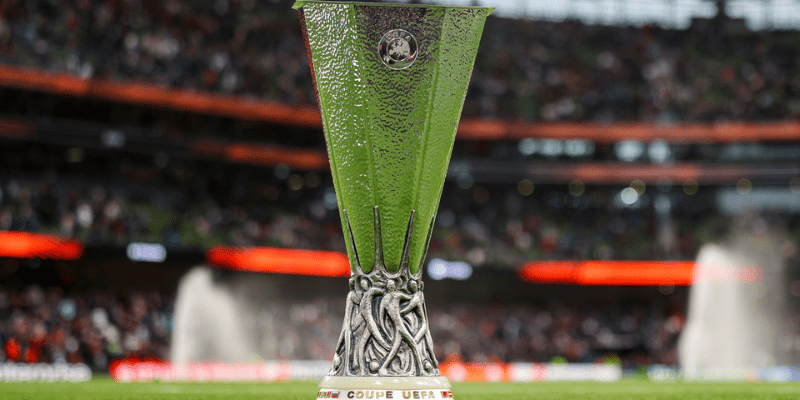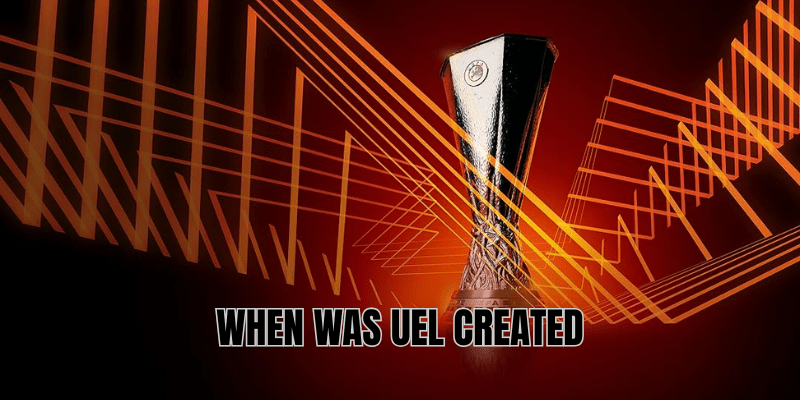From the first whistle to the final—every football fan wonders: when was UEL created? In other words, when did the UEFA Europa League originate? Join CantoKick on a journey through time as we trace the origins, evolution, and key milestones of Europe’s secondary club competition.
The Birth of UEL: Inception as the UEFA Cup

The competition known today as the UEFA Europa League was first established in 1971 under the name UEFA Cup.
It came as a replacement for the older Inter-Cities Fairs Cup, which ran since the mid-1950s but was not formally under UEFA’s control. edia])
The first season of the UEFA Cup was 1971–72, with Tottenham Hotspur becoming the inaugural champions after defeating Wolverhampton Wanderers.
Thus, strictly speaking, UEL (the Europa League format/name) did not exist at that moment—but the competition’s roots lie in 1971. Over time, the format, brand, and identity would evolve until the modern UEL took shape.
Evolution: From UEFA Cup To Europa League

Rebranding In 2009
In 2009, UEFA decided it was time to refresh and modernize the competition. The UEFA Cup was rebranded as the UEFA Europa League beginning with the 2009-10 season.
The rebrand was more than cosmetic. UEFA introduced a group stage format (inspired by the Champions League) and increased commercial appeal with TV rights, branding, and centralized marketing.
So when we ask “when was UEL created”, we usually mean: when did the competition in its current identity begin? That answer is 2009.
Key Modifications Over The Years
Over its history, UEL (and its predecessor UEFA Cup) has undergone several significant changes:
- Group Stage Introduced: From 2004–05 onward, UEFA added a group stage before knockout rounds.
- Feeder System from Champions League: Clubs eliminated.
- Format Adjustments: The number of participating teams, the qualifying rounds, and knockout structure have evolved to balance inclusivity and competitiveness.
- Commercial Growth: The rebrand fueled greater revenue, media coverage, global reach, and more decisive UEFA control over fixtures, branding, and sponsorships.
Why UEL Was Created: Mission & Purpose

The creation (and later rebranding) of this competition reflects several UEFA goals:
Broader European Access
- Not every prominent club qualifies for the Champions League. UEL gives more clubs. Revenue & Market Growth
- UEFA saw an opportunity to monetize a second-tier competition with TV rights, sponsorship, and brand expansion across Europe and beyond.
- Strengthening UEFA’s Portfolio
- As European football became more commercialized, UEFA needed strong flagship competitions. Having a well-structured second tier complements the Champions League and (later) Conference League.
- Evolution of European Football
- The footballing landscape in the 1970s–2000s changed: more clubs, greater professionalism, widening TV deals. UEL (and the UEFA Cup before it) adapted to satisfy demands of modern club football.
Milestones & Historic Moments
First Winner & Trophy
- The first edition (1972) was won by Tottenham Hotspur.
- Originally, finals were two-legged affairs. Only from 1998 onwards was a single-match final at a neutral venue introduced.
Dominance & Records
- Sevilla FC holds the record for the most titles in the competition’s modern era, especially after rebranding.
- Clubs from Spain have been especially successful historically in both the UEFA Cup and UEL.
- Clubs eliminated from the Champions League have often “rescued” their season via UEL—and sometimes even gone on to win it.
Recent Highlights
In recent seasons, UEL has continued to grow its prestige:
- Further format tweaks to integrate the Europa Conference League and redefine qualification paths.
- Increased attention to match scheduling, branding, and alignment with UEFA’s overall club competition strategy.
- The UEL continues to be a battleground for ambitious clubs (not quite elite) to stake a claim on European glory.
Answer Summary: When Was UEL Created?
- The competition’s origins trace back to 1971 when the UEFA Cup was founded.
- The UEFA Europa League in its current branded form was first launched in 2009.
Thus, depending on interpretation—historical lineage or modern incarnation—that’s your answer to when was UEL created.
Final Thoughts
When was UEL created? If you mean the competition’s roots, it’s 1971; if you mean the modern UEL brand and structure, that’s 2009. Either way, its evolution reflects European football’s expansion, commercialization, and competitive shift.
CantoKick hopes this clears up the history behind UEL. If you’d like a deeper dive—say, the top clubs by titles, biggest matches, or how qualification works now—just ask, and we’ll bring you the full scoop.



